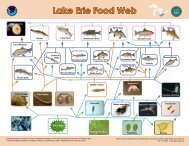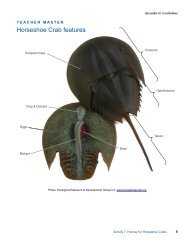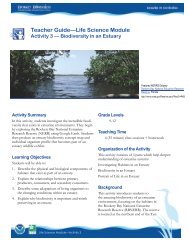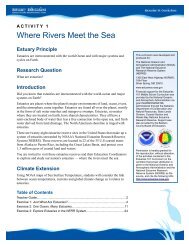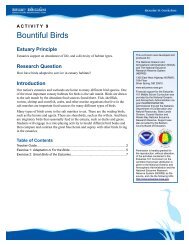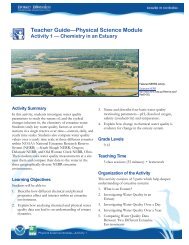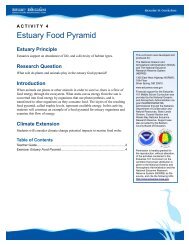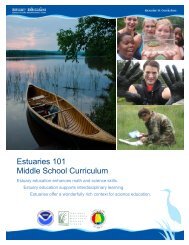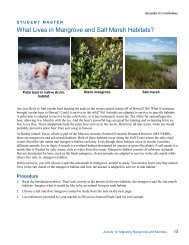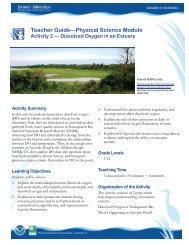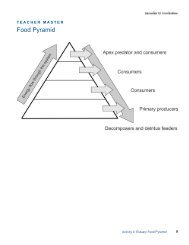Teacher GuideâEarth Science Module - Estuaries NOAA
Teacher GuideâEarth Science Module - Estuaries NOAA
Teacher GuideâEarth Science Module - Estuaries NOAA
Create successful ePaper yourself
Turn your PDF publications into a flip-book with our unique Google optimized e-Paper software.
3g. Now look at the cross-section views in the upper right of the animation, showing salinity with depth in the river,at the lines marked 1, 2 & 3. How does the water get mixed from top to bottom as the salinity changes from upstreamto downstream?Part 4 — Salinity as Measured by Water Quality Stations in York RiverThe animations showed salinity distribution throughout a river based on a computer model. Now, you will observeactual salinity data for a specific day at five different sites along the York River. These sites use data buoys and otherwater quality stations to measure water depth, salinity, and other important data. These instruments support researchat the Chesapeake Bay Virginia NERR and the affiliated Virginia Institute of Marine <strong>Science</strong> (VIMS).You can do this activity in either of two ways: Use your computer to access real-time data and display your owngraphs (see instructions below) or use the Student Data Sheet with its graphs for a sample date.If you use your computer, follow theseinstructions:Open the Virginia Estuarine and Coastal ObservingSystem site at: http://www3.vims.edu/vecos/This will bring up a page showing a regional view withsome of the York River stations.Starting with Goodwin Island Continuous MonitoringStation (CHE019.38), click on each station, movingprogressively up river (to Gloucester Point (YRK—5.40), Yorktown (YRK006.77), Clay Bank(YRKO15.09), and Taskinas Creek (TSK000.23).For each station, print the graphs of salinity and waterdepth.Read other information about the station includingSalinity regime, Mean tidal range: 0.85 meters, andMean water depth.Figure 3. Location of selected monitoring stationsin the Chesapeake Bay region.Earth <strong>Science</strong> <strong>Module</strong>—Activity 25



